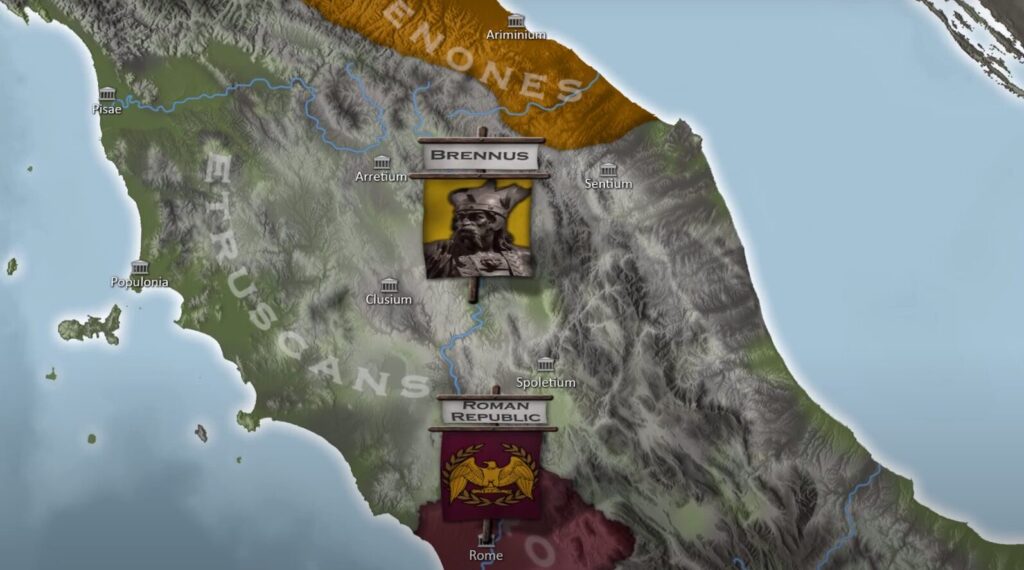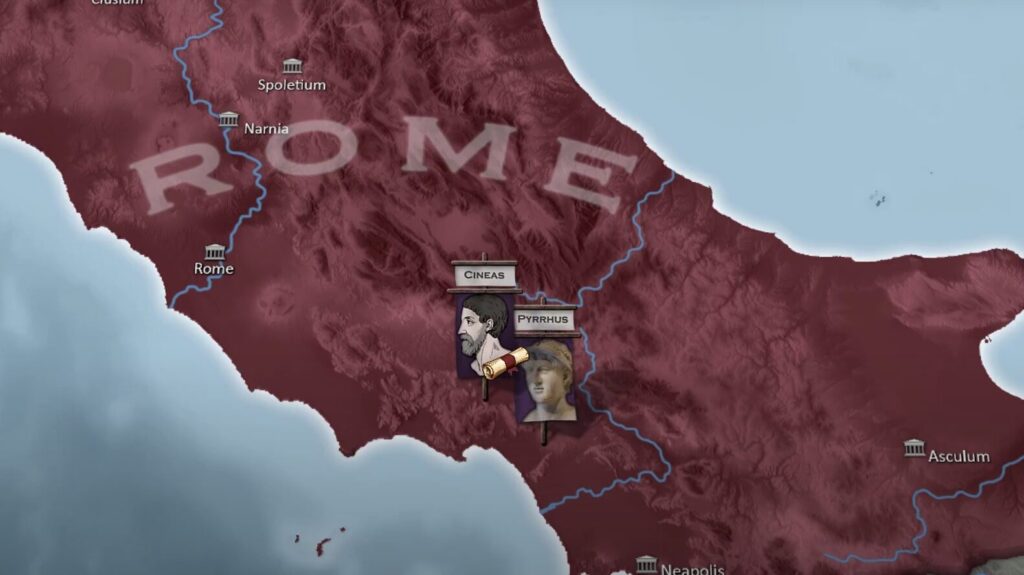The early years of the Roman Republic were marked by constant conflict and change. As Rome worked to secure its place in central Italy, it had to overcome several strong neighbors and face dangerous invasions. Battles against the Sabines, the Latin League, and the Aequi tested the power and unity of the growing city.
With every challenge, Rome learned how to defend itself and expand its reach. Its leaders used both force and politics to outmaneuver rivals, while also dealing with major threats like the Gauls. These events shaped the future of Rome and left a lasting impact on its legacy.
Key Takeaways
- Rome faced many early battles as it struggled for power.
- Successes against nearby tribes helped the Republic grow stronger.
- New threats like the Gauls played a big role in Rome’s history.
Emergence of the Roman Republic
Strengthening Control Over Neighboring Lands
After early challenges, Rome began to secure its local power. It faced conflicts with surrounding groups, slowly overcoming rivals such as the Sabines. The Battle at Lake Regillus in the early fifth century BC was key. Roman forces, led by Albus Postumius Albus and supported by Tius Aemilius Hela, aimed to remove threats from other Latin cities.
In this clash, swift Roman tactics meant help for the Latin League from the nearby Volscians never arrived. The battle ended with the Romans capturing the enemy camp and securing victory. Later, at Mount Algidus in 458 BC, Rome fought the Aequi after they invaded a Roman ally. Roman armies managed to completely surround and defeat the Aequi. These successes helped Rome protect its home and show its growing influence in the region.
Dealing With Nearby Peoples and Tribes
Rome’s growing strength meant regular tension with nearby tribes. As Rome expanded, it clashed with groups including the Latins, Aequi, and Volscians. Even after being defeated, the Latins continued to challenge Roman rule, sometimes gaining the upper hand and causing heavy Roman losses.
Rome often had to respond quickly to new invasions and changes in alliances. One example was a surprise attack by the Senones, a Gallic tribe, after a violent dispute involving Roman ambassadors. The Senones marched directly toward Rome, catching it unprepared, leading to a major crisis.
Below is a summary of Rome’s major early opponents:
| Tribe/Group | Conflict/Event | Outcome |
|---|---|---|
| Sabines | Early territorial struggles | Roman victory |
| Latin League | Battle at Lake Regillus | Roman victory |
| Aequi | Battle of Mount Algidus | Roman victory |
| Volscians | Joined later Latin conflicts | Roman resistance |
| Senones (Gauls) | Siege after failed mediation | Crisis for Rome |
Despite repeated threats, Rome’s ability to adapt its strategies and recover from setbacks helped the Republic establish a strong foundation among its neighbors.
Clash at Lake Regillus
Important Leaders in the Conflict
The Romans were led by Albus, who acted as the dictator, directing the main army. Assisting him was Ti. Aelius, in charge of the cavalry as the master of horse. On the other side, the Latin forces were commanded by Octavius Mamilius and Lucius Tarquinius Superbus. Tarquinius was known as the last king of Rome, and his presence fueled strong emotions among the Romans due to his past as their ruler.
Table of the Main Commanders:
| Side | Commanders | Roles |
|---|---|---|
| Romans | Albus, Ti. Aelius | Dictator, Master of Horse |
| Latin Forces | Octavius Mamilius, L. Tarquinius | Main Leader, Co-Leader |
Supporters and Unsuccessful Reinforcements

The Latin League tried to get help from a nearby tribe called the Volsci. The Volsci attempted to send more soldiers, but the Romans moved so quickly that the extra fighters could not arrive in time. As a result, the Latins were left without the reinforcements they had hoped for when the fighting started.
Key Points:
- The Volsci tried to reinforce the Latins.
- Roman speed stopped any extra Volsci troops from taking part.
- Romans faced only the original enemy forces.
Tactics and Results of the Fight
Both sides sent their main leaders onto the battlefield early in the action. Albus and Mamilius were both injured when they faced each other in direct combat. The Roman cavalry got off their horses and fought on foot, surprising the enemy and forcing the Latins to retreat. Romans then managed to capture the Latin camp, which led to the enemy fleeing from the area.
Battle Steps:
- Leaders from both armies fought and were wounded.
- Roman cavalry fought dismounted, pressing the enemy.
- Latins pulled back; Romans took over their camp.
- The battle ended in a Roman victory.
The win helped increase Roman power in the region, even though the Latins would return to challenge them again in the future.
Rome’s Battles Against the Aequi and Volsci
Fighting at Mount Algidus
The struggle at Mount Algidus started after the Aequi repeatedly raided Rome and its allies. In 458 BC, Rome responded when the Aequi broke a truce with the Tusculans and attacked their land. To help Tusculum, Rome deployed two armies, trapping the Aequi and launching attacks from multiple positions.
Roman victory at Mount Algidus weakened Aequi resistance in the region and secured key Roman interests.
Making Friends and Facing New Enemies
After this defeat, there were short periods of peace, but conflict did not end. The Volsci tribe soon joined the Aequi in challenging Roman power. Together, they tried to gain control, at one point capturing a Roman base and causing about 6,000 Roman losses.
Despite these setbacks, Roman forces regrouped. They divided their troops and struck from different sides, as they had done before, successfully forcing their enemies to retreat.
Unique Paths in Roman Warfare
Roman soldiers often used surprise moves in these wars. For example, splitting their forces allowed them to attack from several directions and trap enemy tribes. This approach, along with fighting fiercely on the battlefield, helped Rome secure victories even when facing losses or losing ground early on.
Roman Tactics Table
| Battle | Enemy Tribes | Roman Tactic | Outcome |
|---|---|---|---|
| Mount Algidus | Aequi | Surround with 2 armies | Roman victory |
| Later Engagements | Aequi & Volsci | Split forces, attack from sides | Forced enemy retreat |
Rome and Its Conflicts with the Latin Alliance
Ongoing Disputes
Rome faced many repeated disagreements with the Latin alliance in the early years. A key example was the clash at Lake Velia, where Rome fought against combined Latin forces. Both sides had leaders who joined the fight directly, making the battle personal and intense. Former Roman King Lucius Tarquinius Superbus even led on the side of the Latins, which made Rome’s troops even more determined.
Here’s a brief overview of these clashes:
| Battle | Roman Leader | Latin Leader | Outcome |
|---|---|---|---|
| Lake Velia | Albus Postumius Albus | Octavius Mamilius, Tarquinius | Romans captured the camp |
| Mount Algidus | — | Tribe of Aequi | Romans surrounded the enemy |
| Later Engagements | — | Latins, Volsci | Romans forced Latins to flee |
Even after suffering heavy losses, Romans consistently reorganized and managed to win key battles, keeping the Latin alliance from gaining ground.
Struggles Over Land and Power
Territory was a major point of tension. Rome worked to grow its power in the region while many neighboring tribes wished to hold on to their lands. The Latin alliance, alongside the tribe called the Aequi and sometimes the Volsci, often tried to push back against Roman advances.
A few events stand out:
- The Aequi repeatedly invaded Rome’s ally, Tusculum, breaking peace deals and prompting Roman military action.
- The Latins once managed to capture a Roman base camp, causing about 6,000 Roman casualties.
- In response, Roman forces split and attacked from several sides, turning the tide and making the Latins retreat.
Rome’s main goal during these years was to secure its place in the region. They focused on building political systems at home while also protecting themselves from threats outside, especially from groups like the Latins who challenged their claims to land and influence.
The Gallic Invasion and the Sacking of Rome
How the Gallic Tribes Became a Threat
By the early 4th century BC, Gallic groups had moved into the Po Valley, edging closer to Roman lands. Over time, their presence raised alarms in Rome as these tribes became more involved with Italian towns.
- The Senones, a powerful Gallic tribe, accepted an invitation to the Etruscan town of Clusium.
- Local tensions increased as hostilities between Roman towns and Gallic groups grew.
Clashes Over Diplomacy with the Senones
The Romans tried to act as mediators when Clusium reached out for help.
- Rome sent three ambassadors to the Senones, hoping to stop any violence.
- Talks quickly broke down; a heated argument grew into a fight.
- One Roman ambassador killed a Gallic chief, breaking the rules of diplomacy and worsening the crisis.
- The Senones demanded that Rome hand over those responsible, but Rome refused due to political pressures.
The Fight at the River Near Rome
Gallic forces, led by King Brennus, marched directly toward Rome, making their intentions clear to everyone along their route.
| Roman Army Preparation | Gallic Army Moves |
|---|---|
| Unprepared and rushed | Fast and determined |
| Weak defense lines | Attacked reserves first |
At the river near Rome, Roman troops were unready. Their thin defensive lines left them open to attack. Gallic soldiers took advantage and targeted the reserve force on a nearby hill.
- Many Romans retreated or fled.
- The battle ended fast, and the Romans suffered great losses.
How Rome Reacted and What Happened Next

Once the battle was lost, the path to Rome was open.
- Political Pressure: The Roman Senate had tried to avoid blame for the failed diplomacy.
- Public Reaction: Citizens, seeing their army defeated and their leaders unsure, panicked.
- Wider Impact: The sack of Rome became a key event, revealing Rome’s vulnerability and shaping the Republic’s future defensive strategies.
Key Results:
- The event left a strong mark on Roman leadership.
- Rome learned hard lessons about both outside threats and the costs of poor diplomacy.
Legacy of Early Roman Expansion
Early Roman expansion had a long-lasting impact on the Republic and its neighbors. As Rome defeated nearby tribes like the Sabines and challenged others in battles, its reputation grew across the region.
Key Consequences:
- Military Strength: Rome showed its ability to respond quickly and win even when outnumbered, like at Lake Vilus and Mount Algidus.
- Regional Influence: Victories against the Latin League, Aequians, and Volsci let Rome control more land and influence local politics.
- Rivalries: These conflicts did not end threats. New enemies such as the Gallic tribes soon arrived, pushing Rome to defend itself as well as expand.
| Tribe | Battle Site | Result |
|---|---|---|
| Latins | Lake Vilus | Roman Victory |
| Aequians | Mount Algidus | Roman Victory |
| Volsci | Algidus, others | Roman Victory |
| Gauls (Senones) | Alia River | Roman Defeat |
This period was important for setting up Rome’s political and military systems, while establishing it as a serious power among the cities and tribes of central Italy. It also forced Rome to be ready against both old foes and new threats, changing its strategy from only fighting for territory to defending its very survival.

Perfect for any project, reliable!
I admire the passion behind this post. Keep up the great work!
You’ve shared something lovely.